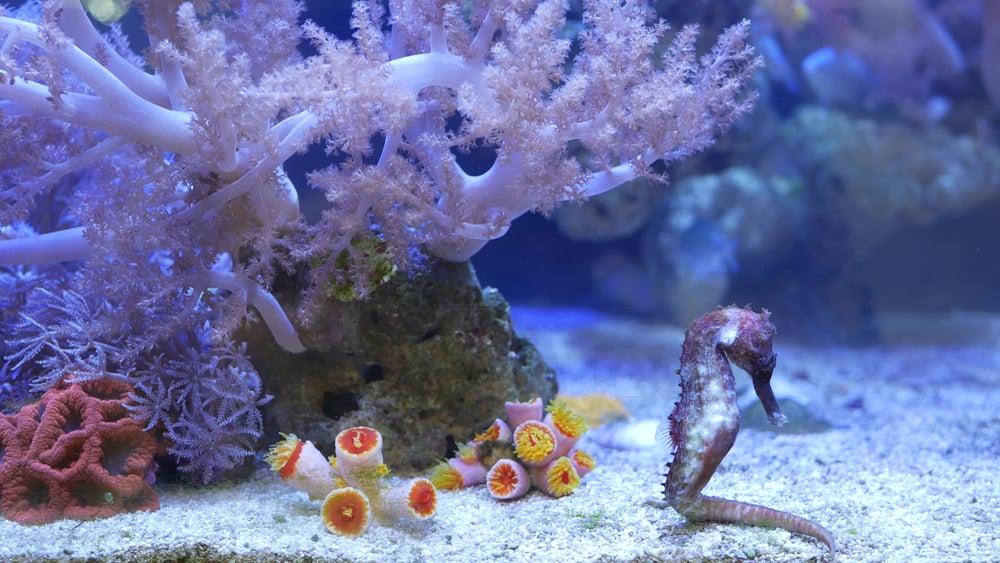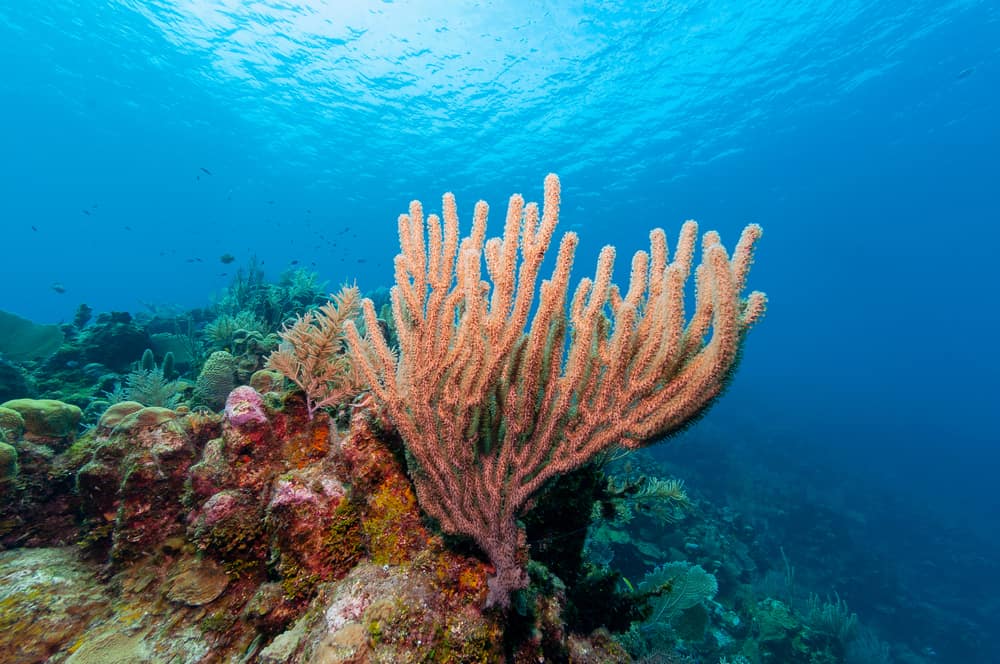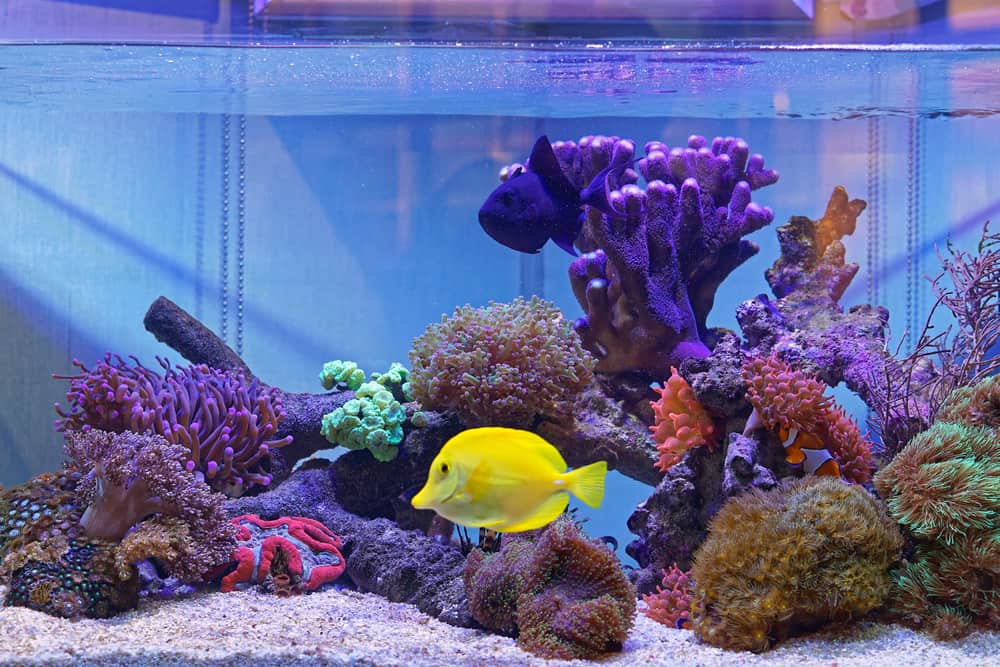Coral is an underwater attraction for big water enthusiasts all around the world. However, whether you decide to become scuba certified or prefer a more relaxed excursion as a snorkeler, the world’s underwater rainforest is a living animal and itself provides a home for over 4,000 species of fish.
The Habits and Biology of Coral
As the largest structure on earth of biological origin, coral ancestors date back 240 million years, although modern refers have been around for probably 5,000 to 10,000 years.
Smaller groups of coral, known as a colony, may live for upwards of 900 years. Interestingly, when coral dies, it eventually turns into limestone and becomes part of our planet’s fossilized history.
Despite its list of specialized conditions for survival, humans are responsible for irrevocable damage to approximately 25% of coral. These include negligent tourism, pollution, overfishing, and climate changes.
Typically, coral lives in the tropical waters, not dipping below 70 degrees Fahrenheit. Therefore, if you want to create an artificial marine ecosystem within your home, you must consider these characteristics for your coral to thrive.
We will later find out that there are different types of coral, but the hard or reef-building corals contribute to creating the more expansive coral reefs that you envision.
A coral polyp, or individual coral, is a tiny little animal closely related to anemones and jellyfish. Building larger polyp colonies, known as coral reefs, begins with the secretion of calcium carbonate beneath their bodies.
FUN FACT: Coral is “the simplest animal to have a dedicated reproductive, muscular, and nervous system.”
In terms of reproduction, coral is a broadcast spawner, a process that entails a calculated release of large amounts of both sperm and eggs into the water.
Eventually, the sperm and eggs come together and form larvae that swim around, searching for a hard surface (rock or other existent coral) to settle on and grow into polyps.
It is important to note that coral will only reproduce if healthy and stress-free. If their environment is unstable or threatened by other-than-favorable conditions, it will conserve its energy for survival.
What Do Coral Eat in the Wild
Remember that coral is a living animal, so unlike plants that use photosynthesis to produce their food, coral needs to catch its food for survival. You can watch this incredible timelapse of coral snatching its food right out of the water.
But coral cannot free swim except when they are in the larval stage, so how do they catch their food?
Like their cousins, the anemone and the jellyfish, coral uses its stinging tentacles to hunt. More specifically, the coral’s tentacles stretch out during the night and capture small ocean critters floating by, called zooplankton.
In addition to this, coral receives additional nourishment from tiny algae, called zooxanthellae. The Florida Keys National Marine Sanctuary explains this unique relationship further along with several other interesting coral facts.
Zooxanthellae reside within the coral to receive protection and an adequate supply of carbon dioxide released from the polyp in which it lives.
In turn, this small water-borne, plant-like organism uses photosynthesis to convert sunlight into precious sugars that the individual polyp will utilize for energy.
In its ocean environment, coral obtains its nutrients through direct and indirect feeding and its relationship with its forever zooxanthellae friend.
But how do you provide similar eating opportunities in the confinement of a saltwater tank?
What Do Coral Eat As Pet
So, you want to be a reefer- do you? In other words, you would like to adopt some coral and enjoy the beauty of the underworld within the confines of your home.
Before you acquire your coral, please remember to research the specific species within any given genus because the spectrum of caring needs is quite vast.
Corals’ most basic needs include water quality, food, light, and water movement. As you begin to explore the many options available, you will likely notice the existence of both soft and hard coral.
Soft corals are soft and bendable and often mimic plants or trees. Instead of stony skeletons like their more rigid cousins, soft coral grow “wood-like cores and fleshy rinds for protection.”
ReefBuilders recommend beginning enthusiasts use soft coral to start their aquariums; however, the next progression may include either a small polyp stony (SPS) or large polyp stony (LPS).
One of the most considerable barriers to maintaining coral in a home-based saltwater aquarium is the ability to provide the proper nutrients it needs to thrive along with keeping toxins under control.
Although people have been taking care of fish as pets for thousands of years, ‘reefing’ is a relatively recent phenomenon that has come about with tremendous amounts of study and research.
With the knowledge available to the aquarist, several strategies already exist to effect the best environment possible for your specific coral species.
Tips to Feed Coral
I’m sure that watching coral flourish inside your reefer tank will be the ultimate satisfaction, especially after all the time and hard work you invest continually from regular maintenance, monitoring test results, and research.
The last step will, of course, be the acquisition and proper placement and attachment of the coral you select inside its new home. With today’s technology, the purchase of coral is as easy as 1-2-3-Click with a reputable online dealer.
Purchasing coral from an online vendor, like ReefLab, may be your only option; however, if you can find a specialty store nearby, a face-to-face connection with an avid coral enthusiast and caretaker may make all the difference in the world.
After you pledge to be the best surrogate coral mommy or daddy in the world, you will have to complete two critical steps. The first is to ensure safe transport of the coral to your home, followed by slowly introducing it to its saltwater tank.
AquariumStoreDepot offers some great tips and advice for setting up your coral reef tank. It would behoove you to glance at their suggestions, especially if you are a beginner hobbyist.
Your initial investment may be rather significant, but you will be able to recoup some of this cost by ‘fragging,’ the removal of a small segment of a coral colony, and reselling to fellow enthusiasts down the road.
Vital to the health of your specific coral is your ability to monitor, clean, maintain, and even offer supplements for optimal water quality.
Fishlore recommends the following parameters, and remember this may fluctuate even to the slightest based on the specific species of coral you have:
- specific gravity at 1.023 – 1.025
- temperature in the range of 76 – 82 °F
- alkalinity around 2.1 to 2.5 meq/L
- calcium 400 – 450 ppm
- magnesium 1200 – 1400 ppm
- ammonia, nitrite, nitrate, and phosphate at 0 ppm
Regular partial water changes will help balance the environment of your saltwater tank and is a great way to reduce the quantity and variety of supplements exposed to your coral.
In addition to water quality, coral can only feed if there is adequate water flow. Therefore, turbulent water is necessary for the coral polyp to catch their prey.
In addition to survivability, turbulent water whisks away sediment and other unsolicited material from the food before the coral ingests it; this promotes a more hygienic eating environment.
Of equal importance to water quality and water flow is aquarium lighting. The amount of light needed to keep corals ultimately depends on the species that you have selected. Please be aware that reef tank lighting is the most expensive portion of your setup.
Lastly, it is incumbent on you to seek out the food recommended for your coral. For a long time, aquarists believed that coral just survived on their own; however, the ocean provides various nutrients and microelements that are not natural to a saltwater tank.
In either case, remember to do your homework and not leave food in your tank that can become a source of water pollution for your coral, for instance, raised nitrate levels.
For a large polyp stony, TheSprucePets recommends “diced small fish, thawed frozen plankton, phytoplankton, krill, pieces of shrimp, squid, or clams” as sources for direct feeding your coral.
A small polyp stony will indirectly feed on bacteria and other dissolved organic compounds existent in the water. Coral’s tertiary means of acquiring energy is its relationship with zooxanthellae algae, which we already spoke about.
Please know that ‘reefing’ impacts the coral reef habitat; this is an ethical issue better handled in another article. For now, I ask that you become a responsible and caring model for our ‘reefer’ community to emulate and aspire to through an appreciation for this marine species and providing an environment in which your coral can survive happily.
Summary
Although coral reefs only cover approximately 0.1% of the earth’s surface, this underwater world is a vast and fascinating ecosystem full of color and life.
If you are passionate about the ocean and the magnificent creatures within, then becoming a knowledgeable and passionate coral mommy or daddy may be right for you.
Would you mind commenting below with any questions or concerns regarding coral adoption?


